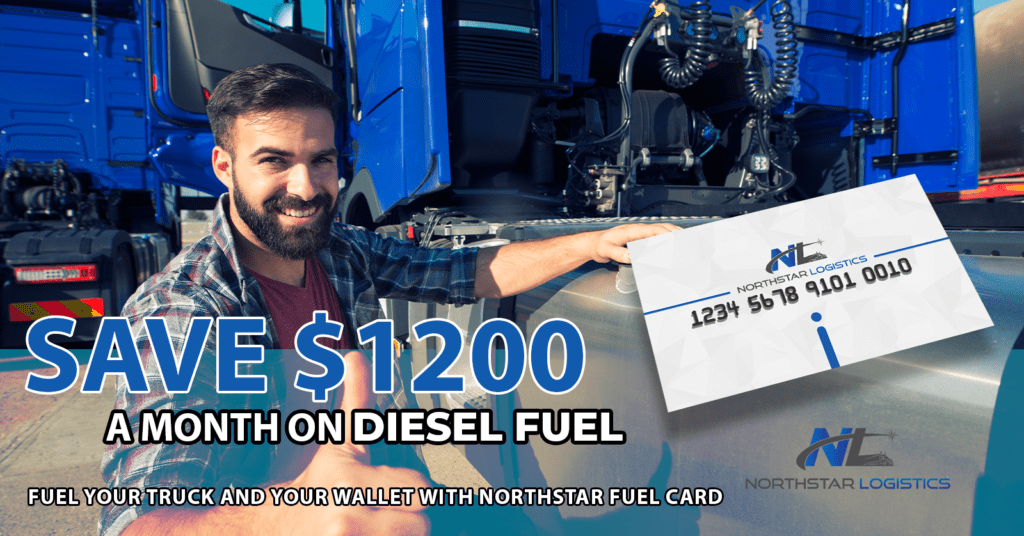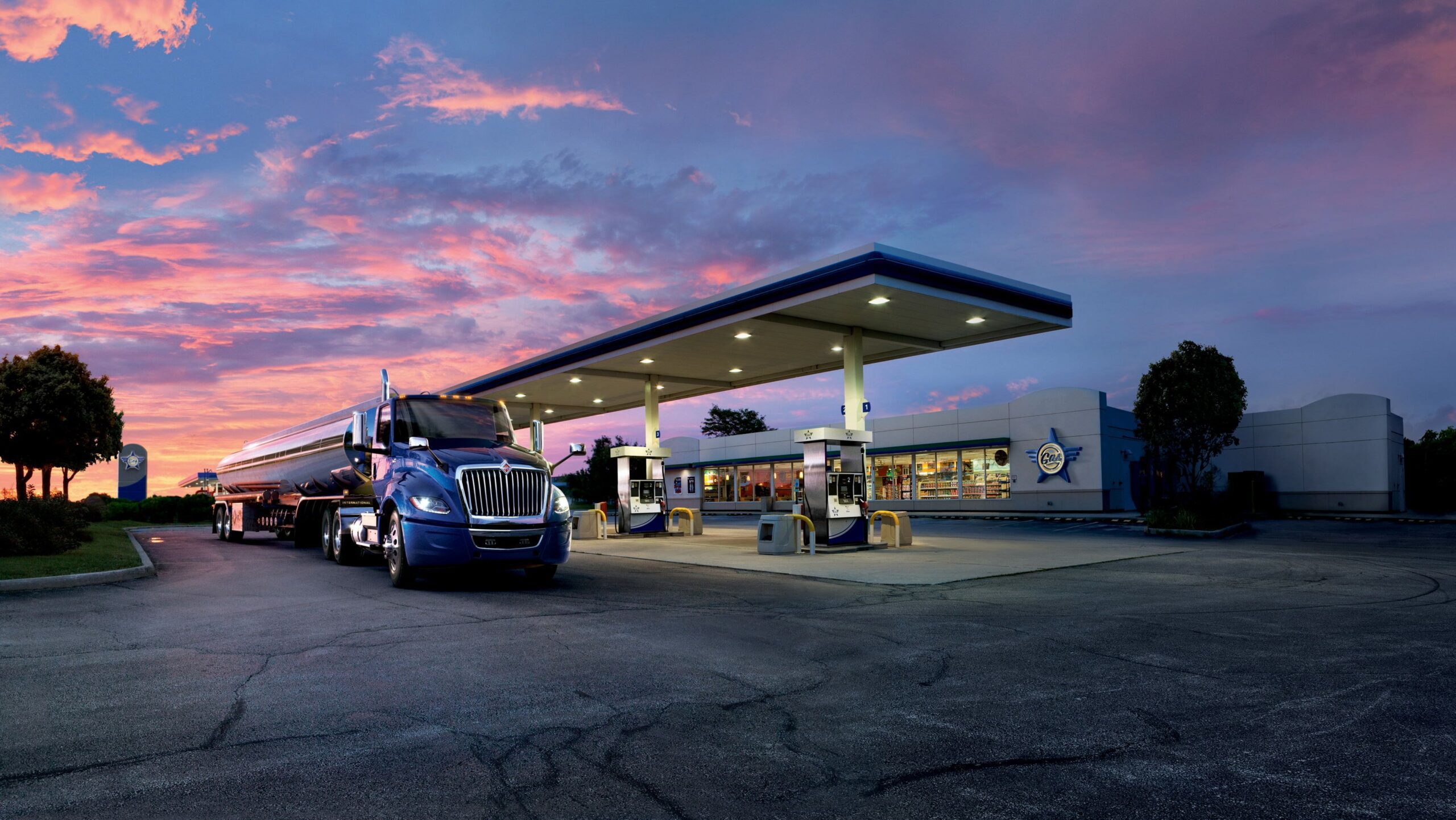Fuel card programs can help your fleet save money on fuel, but exactly how does that happen?
Studies show that, for every dollar the average American trucking company earns, it spends 95.2 cents on operating costs. That leaves a profit of only 4.8 cents. With such a thin margin to work with, trucking fleets need to save money wherever they can, particularly on diesel fuel. Membership to a fleet fuel card can help generate those savings for carriers of any size.
You have likely heard many things about fuel cards from people in the trucking industry. Before deciding what kind of card is right for your fleet, you will want to understand how fuel cards are structured and operate, as well as the benefits they can provide.
Below are answers to some common questions about fuel cards and how they work.
Who Uses Fuel Cards?
The typical customer for a fleet fuel card is an over-the-road trucking company that buys diesel at truck stops for class 7 and 8 commercial trucks. Fuel cards are designed to benefit carriers that range in size from a single rig to hundreds of trucks. Fuel card customers include contracted carriers, private fleets, less-than-truckload carriers and independent owner/operators.

How Does a Carrier Benefit?
A good fuel card program offers carriers significant per-gallon discounts on diesel, as well as savings on other services.
Fuel cards are basically partnerships that are designed to drive sales for fuel station merchants. When a fuel card provider sends its members to partnering truck stops or fuel stops, it receives a cut, usually 2% to 3%, of the fuel sales. To drive more of the fuel card’s members to their fuel stops, the merchants offer exclusive discounts off the per-gallon price. These discounts may be different at each fuel stop location and can change daily, based on fuel prices and settlement rates between the merchant and the fuel card company.
As a carrier, you want a fuel card that consistently offers strong savings on diesel at locations along the lanes your company runs. Finding a card program that offers the right blend of discounts and flexibility can help your fleet save thousands of dollars a year on fuel.
How Are Fuel Savings Calculated?
Per-gallon fuel discounts are negotiated between the merchant and the fuel card company. There are two models of savings offered by most fuel card companies: “retail-minus,” and “cost-plus.”
Retail-minus is exactly what it sounds like. A certain amount of money is deducted from the per-gallon retail price of fuel. That savings is passed along to the fuel card customer.
Cost-plus is a little more complicated. An independent agency called the Oil Pricing Information Service (OPIS) determines the base or “rack” price of fuel for each location. Added to the base price are taxes and transportation costs. The “plus” comes in when other fees are added. The cost-plus model is often cheaper than “retail-minus” in parts of the country like California and Hawaii where the cost of transporting fuel to merchants is more expensive.
Some fuel cards offer fleets a “better of” option. With each fuel purchase, the card will automatically select which of the two pricing models provides the most savings. That way, fleets and drivers do not have to worry about switching back and forth between retail-minus and cost-plus. With “better of,” fleets will always get the best available pricing.
What Happens When You Swipe the Card?
Some fuel card companies charge a small, fixed transaction fee each time your fleet uses the card to purchase diesel. Depending on where you fuel up and what card you are using, your savings may be immediate or sent to you in a check later in the month.
Some merchants provide point-of-sale discounts, meaning the cost of fuel is reduced at the point of settlement. The fleet pays the reduced cost to the fuel card company and the fuel card company pays the reduced cost to the merchant.
Other merchants prefer a rebate model. That means the full cost of fuel is billed to the fleet at retail. The fleet receives a check at the end of the month for the total amount of money discounted from the fuel purchases. The rebate model can sometimes confuse drivers who fuel up, see the full retail price on their receipt and do not think that they are receiving the discount.
What are Some Other Reasons to Use a Fuel Card?
Beyond saving money on diesel purchases, a fuel card offers several other advantages. They include:
- Spending Control. Many fuel cards provide weekly credit lines and PlusCheks that drivers can use to pay for expenses on the road. Each fleet can limit and monitor the amount of money that drivers spend with the fuel card, reducing the chance of fraud. This is a far safer approach than giving drivers an unrestricted credit card or a wad of cash to use on the road.
- Fleet Management. Some fuel cards provide fleets with online accounts that contain real-time, detailed reporting on all transactions. You can customize these reports to identify which drivers are spending the most on fuel, what retailers offer the best deals and how you can operate your fleet more efficiently. You can monitor, score and compare drivers’ behavior, and pinpoint routes and fuel stops that offer the most fuel savings for your trucking fleet. The data you collect from your fuel card account can also help with your fleet’s quarterly IFTA filings.
- Communication. With the daily fluctuations in fuel prices, it is important to have a fuel card company that regularly communicates the latest fuel discounts throughout its retail network. Some fuel cards have mobile apps you can access on your smartphone or tablet to find the lowest fuel prices across the country. This saves you time in planning your routes and eliminates paying too much at the pump.
- Other Savings. While saving money on diesel is usually the main draw to using a fuel card program, many programs offer other ways to save as well. Depending on the fuel card, trucking companies may also receive discounts on maintenance, tires, repairs, document scanning, lodging and other common expenses of operating a trucking company.

